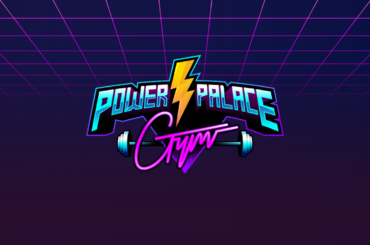I had another ad rejected today for “violating” Facebook’s 20% text rule. And I’m finally sick of it to the point I’m going to do something about it, even if it’s just embarrass Facebook a little by showing how meaningless this rule actually is.

Above is a screenshot which one of Facebook’s “ad integrity specialists” sent me that “proved” my ad for Monster Crate consists of more than 20% text. Please pay special notice to how in some squares of the grid, one of characters of the word Encourage, the letter “E” and the exclamation mark at the end of the sentence is very slightly going into the grid, and yet the “integrity specialist” is counting the entire grid as if it was filled with text.
Also look at the top grids they claim are filled in. They are counting a tiny spec of the top of the characters as if it filled the entire grid. I’m utterly baffled at the level of lunacy that leads to this kind of interpretation.
To make it easier for the more visual of us to understand what I am talking about, here’s the problems Facebook had with my ad,

Does that make sense to you? I hope you are as baffled as I am.
Here’s specifically what the integrity analyst had to tell me. Originally I thought they were including the text of the book and crate packaging but it turned out they were actually included fragments of the characters that happened to go outside the precious little boxes of the grid tool.



And it is silly.
Here’s another ad that the “ad integrity analyst” also rejected.

As you can see in the engagement, this ad did perfectly fine until some random ad integrity analyst cut it.
Until it was blocked by the ad team, I’d spent $150 into the ad and had collected 70 email address signups, which is a pretty decent conversion rate. The ad was performing well and Facebook’s staff killed it not because the ad was coming across as spam or broke any community rules, but rather because the staff interpret the 20% text rule in the most idiosyncratic way imaginable.
This is not the first time this has happened to me. It’s happened on my personal account, and it’s happened while managing client accounts. And do you know how tough it is to deal with a client and try to explain to them how text which represents about 10% of their ad could be interpreted as more than 20%? Trying to explain this madness to a normal fucking person is next to impossible. It’s a stress I don’t need, which is why I don’t like doing Facebook ad campaign work for other people. The only guaranteed way to not get a Facebook ad rejected is for it to have no text in the ad at all — but hell, even that isn’t always possible when the product being advertised is a book or a t-shirt which itself has some text on it. It’s often impossible to avoid this stupid rule.
This time I had it with Facebook’s staff, and I actually filed a complaint using a different help menu option. This afternoon I received a phone call from one of Facebook’s reps about my complaint. The rep explained to me that my ad had passed several reviews by integrity analysts until it was finally rejected, and explained to me Facebook constantly has people checking the ads, even after they have been approved by one person, to check for mistakes.
So basically, Facebook has created a system where there is so much redundancy in the ad approval process that ads are rejected for no good reason. Consequently as a result of this unnecessary redundancy in their poorly created system, I can spend a bunch of money on an ad until some random asshole rejects it for loose reasons.
Now I ask you, dear reader, to not think like an anal retentive administrator who is all-absorbed with his own flawed logic, infatuated with his own supposed “mathematical genius” at devising a system that doesn’t at all match reality. I know I’m being mean and harsh, but let’s be honest here: if you think this….

….actually makes sense, you probably need to go to drug rehab, or get committed to a mental hospital, or something, because you need some psychological treatment for the seriously bad malfunction your brain is experiencing.
So once again, I ask you to think like a normal human being who considers “more than 20% of the ad to be text” to actually literally mean 20% of the space in an ad to be text (and by “text” I mean ad copy, not the text on the packaging of the advertised product), and not define such a thing based on the flawed logic of this poorly designed grid tool?
Honestly, the design of this grid tool should be embarrassing to Facebook.
So I ask out there to the internet; Is anyone else tired of Facebook’s staff accepting an ad for a week, allowing you to spend hundreds of dollars on it, and then once you understand the conversion rate for the ad and decide you want to spend a couple thousand into it, some random “ad integrity analyst” at Facebook decides to loosely interpret the ad rules and kill your campaign after you’ve already built up a good social engagement momentum on it?
I’m personally sick of it, which is why I’ve created this post. I think if everyone of like mind started sharing these incidents and how flawed the interpretation of the rule is, Facebook will eventually get so embarrassed and realize their “ad integrity” staff are causing Facebook to lose advertising revenue by shutting down successful ad campaigns. Maybe even prominent Facebook shareholders who didn’t know this was happening are going to get involved and force them to change it. If I was an investor, I’d be furious to learn something like this was holding profits back.
Yes, Facebook shareholders, the enforcement of this rule causes Facebook revenue to go down. I know I don’t spend half as much as I would on ads because (as I just showed) Facebook rejects my ads all the goddamn time over this petty rule. I love the laser-focused targeting that can be done on Facebook, but it is a royal pain in the ass to deal with their staff if your ad has any text in it at all. There’s lots of advertisers this is happening to. Just read the comments posted on the page, or do a few Google searches. You’ll find irate marketers everywhere.
To be perfectly honest, the 20% rule is probably the most insane thing I’ve ever seen a publicly traded company incorporate into their business model. I don’t have any better way of saying this, but the fact is this kind of rule makes Facebook come across as if the company has deeper mental issues.
The simple fact of the matter is the text in my ads does not fill up 20% of the ad. The problem is not with the ad, the problem is with the way Facebook employees define what 20% of the ad means.
Worse, I don’t believe the 20% text rule actually makes ads more effective. For some proof, here’s a look at some of the most organically viral content being shared on Facebook as I type this,










I didn’t have to search hard for these 10 example posts.
I found them within 2 minutes of going down my Facebook feed and looking at what all my friends are sharing and engaging with.
I’ve been using Facebook consistently every day for years, and I know this has always been the case. This kind of content has always gone viral.
In fact I estimate at least 80% of my feed at any given time consists of posts like this.
So, 80% of my feed consists of content Facebook’s ad integrity team would reject for breaking their insane 20% text rule. Yet, according to Facebook that shouldn’t be the case. According to Facebook, they implemented the 20% text rule to ensure our ads don’t get ignored as spam. Yet, posts on Facebook with more than 20% of the image consisting of text is getting very large amounts of engagement all the time.
It doesn’t matter if you have some kind of personal bias against text heavy images, or possess other strange pet peeves concerning size and placement of ad copy.
The blatantly obvious fact remains that all of the posts above have gone viral in an organic way, getting high engagement and reshared hundreds, sometimes thousands of times.
All of these posts break Facebook’s 20% text rule that supposedly is to protect the integrity of feeds, because supposedly people think images with a lot of text on them is spam. Yet the behavior of Facebook’s users show this is not the case and that a high amount of text on the ad is not actually a precluding factor on whether a post will be paid attention to or ignored.
With all of this in mind….
I challenge Facebook to release proof that text-heavy images are largely ignored by Facebook users and this proof is used to justify the existence of the 20% text rule they so strictly enforce upon us. I make this challenge because a simple observation of my own feed shows that text-heavy images go viral every day.
I believe it’s not the amount of text that people care about, it’s the message, and the behavior of other Facebook users who cause text-heavy posts to go viral indicates my belief is true.
If Facebook didn’t make this rule based on arbitrary reasons (such as, perhaps, a top Facebook executives’ personal bias against text-heavy images) and actually has an empirical study that defies what I and millions of other Facebook users are witnessing is true, then show us the proof. It should be easy if this decision was actually data driven, like the company so often likes to claim its decisions are based.
But, if Facebook can’t demonstrate proof, I ask that you remove the 20% text rule for Facebook ads and stop wasting our time and money enforcing a rule that serves no actual benefit to Facebook, it’s users or to advertisers.
I sincerely believe Facebook’s rule is arbitrary in nature based on someone’s pet peeve that for some strange reason is determining company wide policies, and not based in evidence. I don’t think Facebook has any study that demonstrates user behavior causes text-heavy ads to be ignored.
I believe this 20% text rule serves no meaningful purpose and is just wasting advertiser time and money, asking us to re-submit ads again and again with less and less text (and consequently, less effective ad copy which becomes either too small to read or loses words that make the statements more powerful) while trying to appease your OCD employees that think a single letter taking up a tiny corner of a “square” in your tool means the entire block should be counted as if it had text inside it (which — I have no better way of saying — is an extremely anal retentive way to measure how much text is actually covering an ad ) who very clearly are not actual marketing experts and do not understand what makes effective ad copy.
The only logical way it makes any sense for Facebook to have such a rule is if Facebook intentionally wants to look for a reason to reject an ad after it has proven successful, with the ulterior motive of forcing advertisers to keep posting new ads (which need to be validated all over again from scratch in small advertising spends) in some kind of scheme to suck more marketing dollars out of us, since once a successful ad has been identified but it has been rejected, we have to start over from ground zero with a new ad. An extra $100 here and there may not sound like a big deal, but it can add up when Facebook does it to millions of small businesses trying to market on Facebook.
Now having said all of this, I doubt Facebook is doing this for such a malicious reason, because that would be against the law and make them liable for a class-action lawsuit, but at the moment it seems this is the only rational explanation for enforcing this rule which is not grounded in the reality I witness every day on Facebook — that posts with more than 20% of their image consisting of text go viral every day.
What do you think? Let me know in the comments below.




